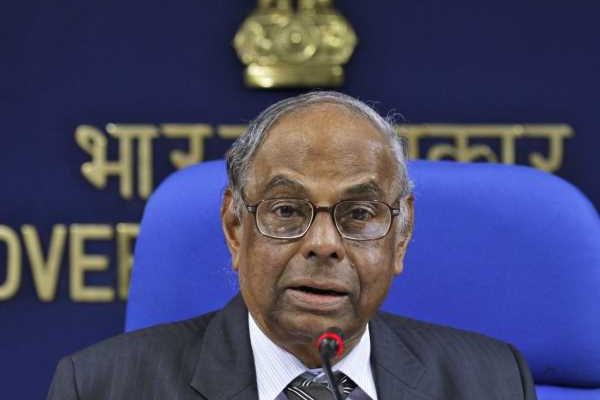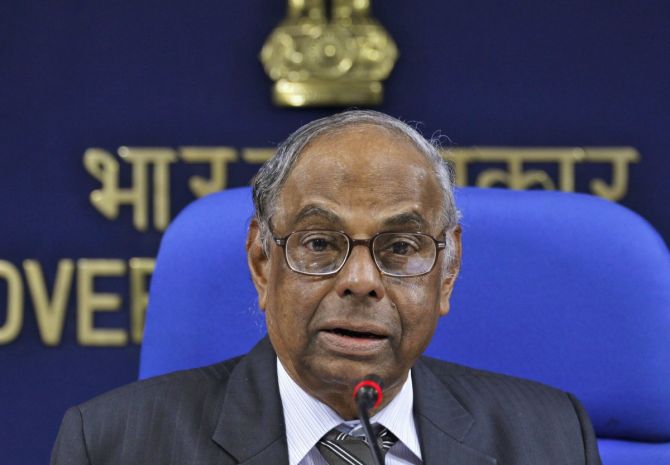It is time for the three finance ministers of the 1990s to reveal the real hero, says T C A Srinavasa-Raghavan.
July 1991 is seen as the month when major economic reforms were announced under great duress.
So the political consensus on them broke down as early as September 1991, when the reduction in fertiliser subsidy on just one item, urea, had to be abandoned.
The price increase was just Re 1! The finance minister even offered to resign.
So how did reforms progress throughout the 1990s? Truth be told, it wasn’t the government but the Reserve Bank of India that is the real hero of the reforms of the 1990s.
The three governments of that decade — the Congress, the United Front, and the National Democratic Alliance — went along because whatever the RBI did had no impact on votes.
And what the RBI did was to shake up the financial sector, which was tiny then.
The effort was led by the RBI, which finally got lucky in that it had three governors who understood the need for such reform and were able to persuade the government that no adverse political consequences would follow.
The RBI slowly put in place sturdy systems to regulate the financial markets.
The Securities and Exchange Board of India had not yet grown into the regulator it has become now and the RBI, because of its age and experience, was very much the elder brother.
Slowly but surely, its image changed from being a passive, fuddy-duddy and boring place to one that was trendy and where things were happening.
Nothing illustrates this better than an episode in mid-1997.
There was great political uncertainty over whether the government would fall and, if so, when.
That meant there might be no finance minister when the annual ‘monetary policy’ was due to be announced.
After some hesitation, the governor, C Rangarajan, decided to go ahead and announced what has come to be known as the ‘Big Bang Monetary Policy’ of 1997.
The pity is that it has been largely forgotten, even by the RBI’s official historians.
In the 1980s, Dr Rangarajan had written the Chakravarty Committee report on financial sector reform.
The RBI empowered the banks by moving away from micro to macro regulation.
Henceforth, the RBI would lay down the broad guidelines and principles and the banks would be free to do pretty much as they wished within those parameters.
Dr Rangarajan was also clear that it would have to be market forces that determined the way banks conducted their operations.
Basically, they were given much greater freedom, at least from the RBI if not the government.
At the top of Dr Rangarajan’s mind was the need for a bank rate to emerge. This is the rate at which banks lend each other.
It is the base price of money in an economy. India used to have one until the government eliminated it in the 1970s.
All advanced economies have this rate and Dr Rangarajan too wanted to move in that direction.
He also used the occasion to alter the nature of the foreign exchange market because of the greater integration with global markets that was being envisaged.
He told the market participants the same thing he had said to the banks: No more micro-management.
Throughout the 1990s, the RBI initiated and executed one reform after another in the financial sector.
Almost always the sequencing of these reforms became the main issue but hardly ever the substance.
The direction was unambiguous: Removal of government controls on the financial sector.
The RBI’s first task was to fix the external payments arrangements and it came up with some highly innovative ideas, fathered, it is said, by Arvind Virmani.
These worked very well while they were in use, which, as it turned out, was not for very long.
At the peak of the forex crisis, the Liberalised Exchange Rate Management System (LERMS) was recommended by an expert committee of the RBI, which had been constituted on oral instructions from the governor to keep everything quiet. Its existence was known only to a few.
It was originally called NERA (the New Exchange Rate Arrangement) to rhyme with FERA (Foreign Exchange Regulation Act).
LERMS was incorporated in the Report of the Balance of Payments Group but in the hurry to come out with a solution before the Budget, its origins remain obscure because everything was off the record except for the final report.
There were no minutes circulated of the meetings to avoid their getting into the wrong hands.
LERMS was introduced on March 1, 1992. It worked for a year and on March 1, 1993, the unified exchange rate system was introduced. It has been working since then.
From a macroeconomic standpoint, the most important change, brought about because Dr Rangarajan insisted on it, was the delinking of the budget deficit from monetisation.
Basically, this meant the RBI would stop printing notes to finance the excess of government expenditure over revenue.
This practice had been followed since 1955 and stopping it was one of the most fundamental reforms of the period. This gave the RBI much greater flexibility in monetary management.
The Union Budget for 1994-1995 had announced that there would be a limit on resort to the RBI for ad hoc Treasury Bills by the central government. This was formalised by an agreement between the government of India and the RBI, which was signed on September 9, 1994.
The last three years of the 1990s also saw the replacement of FERA by the more flexible Foreign Exchange Management Act (FEMA). The RBI was consulted in the drafting of the law and the new thinking was very different from the one that had led to FERA in the 1970s.
In short, it was the RBI that was the real hero of the 1991 reforms. It’s time for the three finance ministers of that decade to say so.
Feature Presentation: Rajesh Alva/Rediff.com
Source: Read Full Article


